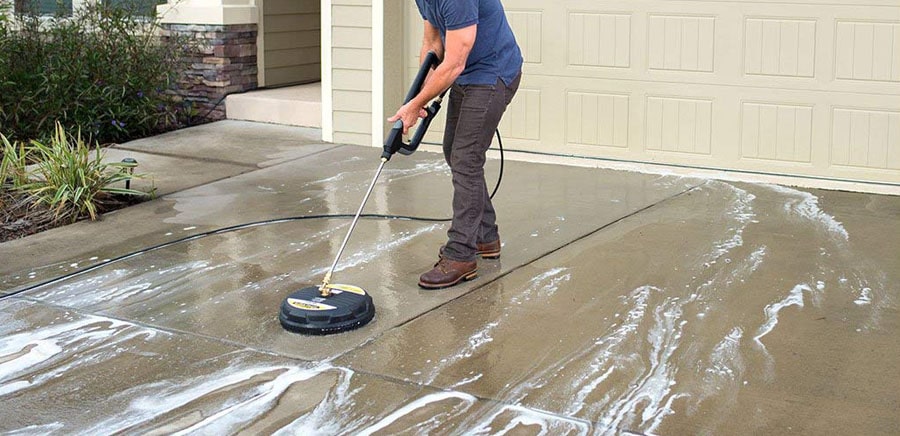
Power washing is a powerful way to clean homes, sidewalks, vehicles, and commercial buildings — but it’s not just about water and pressure. Often, detergents are used to help loosen grime, kill mold, and break down oil or algae. But here’s the thing: not all cleaning agents are created equal.
With growing environmental concerns, more property owners and businesses are seeking eco-friendly cleaning solutions. As a power washing professional or homeowner, knowing what’s in your detergent and how it affects the environment is just as important as knowing how to use your equipment. 🧼🌎
In this guide, we’ll break down everything you need to know about using eco-friendly detergents in power washing — what they are, why they matter, how to use them effectively, and which ones are worth trying.
🧪 What Makes a Detergent “Eco-Friendly”?
An eco-friendly detergent is one that is:
- Biodegradable: Breaks down naturally in the environment
- Non-toxic: Safe for humans, pets, and wildlife
- Phosphate-free: Doesn’t promote algae blooms in waterways
- Plant-based or naturally derived: Uses ingredients like coconut oil, citric acid, or enzymes
- Low-VOC: Doesn’t release harmful fumes or gases
In short, an eco-friendly detergent gets the job done without harming nature — or the people who live in it. 🐾🌱
❌ The Environmental Cost of Traditional Detergents
Let’s take a moment to look at the darker side of common chemical cleaners. Many traditional power washing soaps contain:
- Phosphates – which fuel algae growth in rivers and lakes
- Chlorine bleach – which is corrosive and toxic to aquatic life
- Ammonia – can irritate the skin and eyes, and pollutes water
- Synthetic surfactants – don’t break down easily and linger in the ecosystem
When these chemicals run off into storm drains, they eventually reach streams, rivers, and oceans — affecting fish, plants, and drinking water supplies. 🚱🐟
Plus, they’re often overkill. You don’t need harsh solvents to clean a vinyl fence or a patio. You need the right detergent at the right concentration with the right technique.
✅ Benefits of Going Green
Using eco-friendly detergents isn’t just good for the planet — it’s good for business too. 🌎💼
Here’s why:
- Legal Compliance: Some cities require green cleaning methods, especially near storm drains
- Market Advantage: More customers actively seek out “green” service providers
- Reputation Boost: Your business looks modern, responsible, and community-focused
- Less Risk: Safer for your employees, equipment, and the surfaces being cleaned
- Better Results with Less Damage: Many eco-formulas are gentler and won’t etch soft materials
Consumers care about sustainability — and many will pay more for eco-conscious service. 📈💚
Browse Amazon Here For Eco-Friendly Pressure Washing Detergents
🔍 How to Spot Truly Green Detergents
Marketing can be misleading. Just because a label says “natural” or “eco” doesn’t mean it meets true green standards. Watch for greenwashing — where products are advertised as eco-friendly but don’t back it up with facts.
Look for these certifications:
- ✅ EPA Safer Choice
- ✅ Green Seal
- ✅ EcoLogo
- ✅ Biodegradable (per OECD standards)
Also check the Safety Data Sheet (SDS) for:
- Biodegradability percentage
- Toxicity levels
- pH balance (aim for neutral to mild alkaline)
Pro tip: Choose concentrated formulas to reduce packaging and waste. Less product = less impact. ♻️
🧼 Application Tips for Eco-Friendly Detergents
You don’t have to sacrifice performance when using green cleaners — you just need to follow a few smart tips:
- Pre-wet the surface: Helps loosen debris and reduce detergent use
- Let the detergent dwell: Don’t rinse immediately — give it 5–10 minutes to work
- Use the right nozzle: Low-pressure soap nozzles help apply evenly
- Rinse thoroughly: Especially if you’re cleaning food-prep or pet-safe areas
- Avoid hot days: Cleaning in direct sunlight may cause streaks or quick evaporation
💡 Use soft washing techniques when possible — especially on siding, wood, or painted surfaces. It combines eco-friendly detergents with low pressure for safe, effective cleaning.
🔬 Popular Eco-Friendly Detergents for Power Washing
Here are a few respected products in the green power washing world:
| Product | Features |
|---|---|
| 🌿 Simple Green Oxy Solve | EPA-certified, biodegradable, excellent for siding, driveways |
| 🧼 Krud Kutter House & Siding Cleaner | Non-toxic, bleach-free, tough on mold and algae |
| 🧪 Enviro Bio Cleaner (EBC) | Commercial-grade, degreaser, plant-safe |
| 🪵 Spray & Forget Exterior Cleaner | Non-corrosive, works without rinsing over time |
| 🧴 Wash Safe Industries’ Oxygen Bleach | Powder-based, no runoff issues, very gentle |
When in doubt, call the manufacturer or review the SDS sheet before use. Better safe than sorry. 📋
🌧️ Stormwater Runoff: Handle with Care
One of the biggest concerns — and violations — in power washing is letting detergent runoff enter storm drains.
This is especially important when using any soap, even eco-friendly ones.
Tips to manage runoff:
- Use booms or barriers to block drains
- Power wash on permeable surfaces like gravel or grass when possible
- Reclaim water with vacuum systems for larger jobs
- Avoid washing near open waterways during rain events
Many cities now have “zero discharge” rules, meaning nothing can enter the drain — not even biodegradable soaps. Always check local regulations. 🚧
💬 Final Thoughts
Eco-friendly power washing isn’t just a trend — it’s the future of the industry. 🌎💧
By choosing biodegradable, non-toxic detergents, you protect the environment, your clients, and your own reputation. Best of all? You don’t have to compromise on quality.
Powerful cleaning and environmental responsibility can — and should — go hand in hand.
Whether you’re just starting out or already a seasoned pro, switching to green detergents is one of the smartest decisions you can make for your business. 🍃🧼💪
Browse Amazon Here For Eco-Friendly Pressure Washing Detergents



